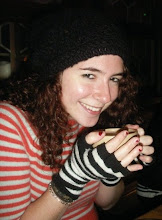“How full of marvels was the world!” Hamill reads from the last chapter of “Downtown,” and after interviewing him, it’s clear that this is how he views life. He has a warm, easygoing manner, and delivers grand pauses between his sentences that make me think. Every interest in his life refers back to his greatest passion: writing. Whether he speaks about sports (“Basketball is beautiful- you see Michael Jordan and you say ‘Wow, I wish I could write like that”) or jazz music, it all ties in to being a writer (what he says is “being guilty with an explanation”).
Hamill is 74 years old, but looks very youthful, like he has never lost his intense curiosity and compassion that according to him, come with the best reporters. He says he will not stop writing until he is carried off to his grave. However, writing was not the first profession that appealed to him. He went to college in Mexico City on the GI Bill, and was so intimidated by the Mexican artists of the time that he says he “failed into writing.” He was attracted to writing because of “the sense of possibility of seeing the world,” which led to him choosing the navy instead of the army in his younger years.
Hamill is currently working on a novel, a mystery revolving around the current recession in New York City, that is due to come out in late spring of 2010. He has been a Distinguished Writer in Residence at NYU for four years now, and says he loves meeting out-of-town students who are seeing New York “for the first time in a real way.” Undergrads recount these experiences in Street Level, a publication that Hamill runs.
Pete Hamill has had an exciting life, and in the way he describes the joy of sports (as an “unscripted drama”), one sees his passion for spontaneity and surprise that comes with reporting and writing.
Pete Hamill's 2004 book "Downtown: My Manhattan"
